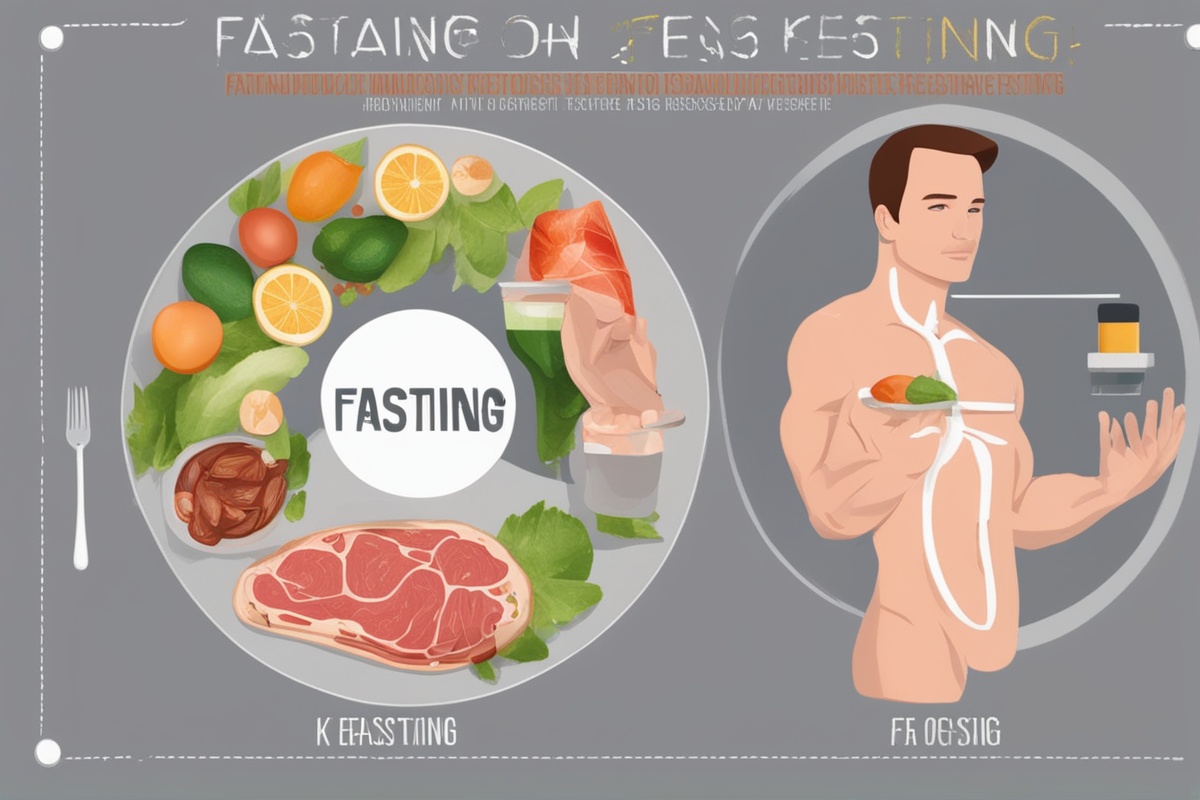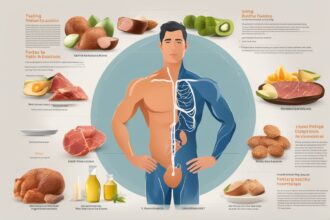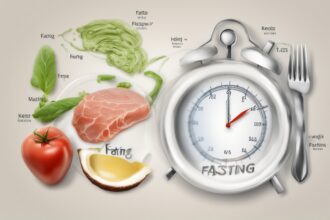Hey there, health enthusiasts! If you’ve ever considered fasting as a way to improve your wellness, you’ve likely stumbled across the term “ketosis.” Maybe you’re curious about how fasting can kickstart this fat-burning state or how to make the process smoother with actionable fasting tips. I’ve been down this road myself, experimenting with different fasting methods and diving deep into the science behind ketosis. Today, I’m excited to share a comprehensive guide that blends practical advice with evidence-based insights. Whether you’re a beginner or a seasoned faster, this post will help you understand the powerful connection between fasting and ketosis—and how to leverage it for better health.
What Is Fasting and How Does It Relate to Ketosis?
Fasting, at its core, is the voluntary abstinence from food for a specific period. It’s been practiced for centuries across cultures for spiritual, religious, and health reasons. Today, it’s gaining traction for its potential benefits like weight loss, improved mental clarity, and metabolic health. But here’s where it gets interesting: when you fast, your body undergoes a metabolic shift that can lead to ketosis—a state where it burns fat for fuel instead of carbohydrates.
Ketosis happens when your liver converts stored fat into ketones, small molecules that serve as an alternative energy source for your brain and body. This typically kicks in after 12–16 hours of fasting, depending on your activity level and carb intake beforehand (Layman et al., 2015). So, fasting naturally becomes a gateway to ketosis, making it a powerful tool for anyone looking to optimize their metabolism. Let’s dive deeper into how this works and why it matters for your health goals.
The Science Behind Fasting and Ketosis
When you eat, your body primarily uses glucose (from carbs) for energy. Insulin levels rise to shuttle that glucose into cells. But during a fast, with no incoming food, glucose stores (glycogen) in your liver and muscles deplete. After about 12 hours, your body starts tapping into fat reserves, breaking them down into fatty acids and glycerol. The liver then transforms these fatty acids into ketones, ushering you into ketosis (Cahill, 2006).
Research shows that ketosis not only supports fat loss but also offers neuroprotective benefits and may improve insulin sensitivity (Paoli et al., 2013). This is why fasting methods like intermittent fasting (IF) or extended fasts are often paired with ketogenic diets—they amplify the body’s ability to stay in this fat-burning mode. But achieving ketosis through fasting isn’t just about skipping meals; it’s about timing, preparation, and sustainability. That’s where practical fasting tips come into play.
Benefits of Combining Fasting with Ketosis
The synergy between fasting and ketosis can supercharge your health in multiple ways. For one, it’s a game-changer for weight management. Studies suggest that ketosis suppresses appetite by regulating hunger hormones like ghrelin, making it easier to stick to a fasting schedule (Sumithran et al., 2011). Beyond weight loss, fasting-induced ketosis may reduce inflammation, support cellular repair through autophagy (a process where cells clean out damaged components), and even lower the risk of chronic diseases like type 2 diabetes (Mattson et al., 2017).
I’ve personally noticed sharper focus during fasting periods, likely due to ketones being a more stable energy source for the brain compared to glucose. But let’s be real—it’s not all smooth sailing. Transitioning into ketosis can come with side effects like fatigue or the infamous “keto flu.” That’s why I’ve compiled some go-to strategies to make the journey easier.
Practical Fasting Tips to Achieve Ketosis Safely
If you’re new to fasting or aiming to reach ketosis, jumping in without a plan can feel overwhelming. I’ve learned through trial and error what works best, and I’m sharing these fasting tips to help you succeed. These strategies focus on preparation, hydration, and listening to your body to ensure a safe and effective experience.
- Start Small with Intermittent fasting: If you’re a beginner, try a 16:8 fasting schedule—fast for 16 hours and eat within an 8-hour window. This gently eases your body into longer periods without food, helping you build up to ketosis.
- Lower Carbs Before fasting: Reduce carbohydrate intake a day or two before starting your fast. This depletes glycogen stores faster, speeding up the transition to fat-burning mode.
- Stay Hydrated: Drink plenty of water during your fast. Dehydration can worsen symptoms like headaches or fatigue as your body adjusts to ketosis.
- Replenish Electrolytes: Add a pinch of salt to your water or sip on bone broth to maintain sodium, potassium, and magnesium levels, which can drop during fasting.
- Break Your Fast Gently: After fasting, avoid heavy, carb-laden meals. Start with something light like a salad or avocado to prevent digestive discomfort.
Common Challenges and How to Overcome Them
Let’s talk about the hurdles. Fasting to reach ketosis isn’t always a walk in the park. Many people, myself included, have faced issues like irritability, low energy, or cravings in the early stages. These are often signs of your body adapting to a new fuel source. The good news? With the right fasting advice and mindset, you can push through.
- Combat Keto Flu: Symptoms like nausea or dizziness often stem from electrolyte imbalances. Sip on salted water or take a magnesium supplement to ease the transition.
- Manage Hunger Pangs: Distract yourself with light activity or drink herbal tea. Hunger often passes in waves and diminishes as ketones suppress appetite.
- Avoid Overexertion: During the first few days of fasting, keep exercise low-impact. Your energy may dip as your body switches gears to ketosis.
- Get Enough Sleep: Poor rest can amplify stress and cravings. Aim for 7–9 hours nightly to support recovery during fasting.
Who Should Avoid Fasting for Ketosis?
While fasting and ketosis offer impressive benefits, they’re not for everyone. Certain groups should approach fasting with caution or avoid it altogether. If you’re pregnant, breastfeeding, or have a history of eating disorders, fasting could pose risks. Likewise, individuals with medical conditions like diabetes or kidney disease should consult a healthcare provider before starting, as fasting can affect blood sugar and electrolyte balance (Anton et al., 2018). I always recommend checking with a doctor or dietitian to tailor fasting strategies to your unique needs. Safety first!
In wrapping up, fasting and ketosis are a dynamic duo for optimizing health, from shedding stubborn pounds to boosting mental clarity. By implementing the fasting tips and strategies shared here, you can navigate this journey with confidence. Remember, it’s not about perfection—it’s about progress. Start small, listen to your body, and adjust as needed. I’ve seen incredible changes in my own energy and focus through fasting, and I’m rooting for you to experience the same. Got questions or personal fasting stories? Drop them in the comments—I’d love to hear how these fasting hacks work for you!
References
- Obesity, 26(2), 254–268. https://doi.org/10.1002/oby.22065
- Cahill, G. F. (2006). Fuel metabolism in starvation. Annual Review of Nutrition, 26, 1–22. https://doi.org/10.1146/annurev.nutr.26.061505.111258
- Layman, D. K., Anthony, T. G., Rasmussen, B. B., Adams, S. H., Lynch, C. J., Brinkworth, G. D., & Davis, T. A. (2015). Defining meal requirements for protein to optimize metabolic roles of amino acids. The American Journal of Clinical Nutrition, 101(6), 1330S–1338S. https://doi.org/10.3945/ajcn.114.084053
- Ageing Research Reviews, 39, 46–58. https://doi.org/10.1016/j.arr.2016.10.005
- Paoli, A., Rubini, A., Volek, J. S., & Grimaldi, K. A. (2013). Beyond weight loss: A review of the therapeutic uses of very-low-carbohydrate (ketogenic) diets. European Journal of Clinical Nutrition, 67(8), 789–796. https://doi.org/10.1038/ejcn.2013.116
- Sumithran, P., Prendergast, L. A., Delbridge, E., Purcell, K., Shulkes, A., Kriketos, A., & Proietto, J. (2011). Ketosis and appetite-mediating nutrients and hormones after weight loss. European Journal of Clinical Nutrition, 65(7), 759–764. https://doi.org/10.1038/ejcn.2011.90






